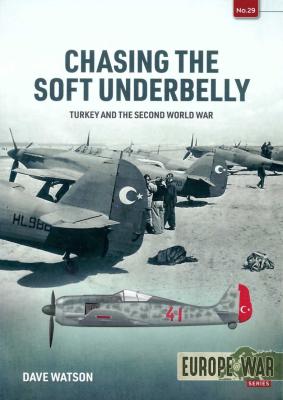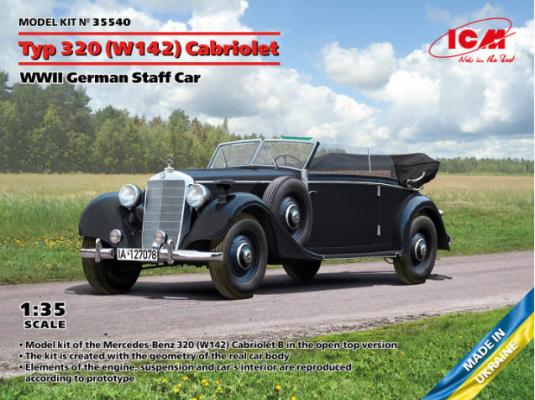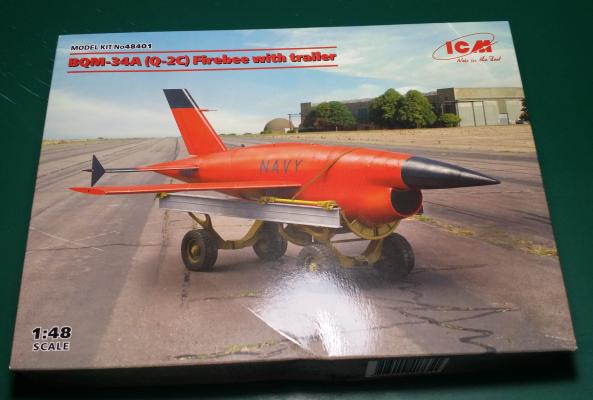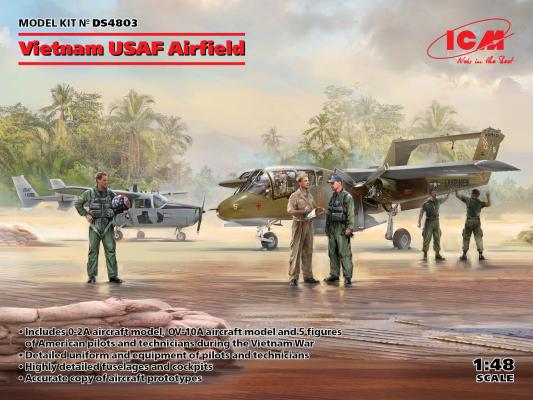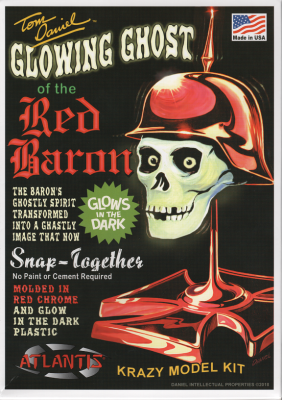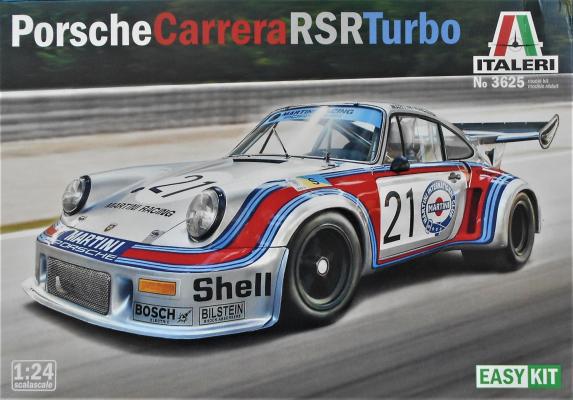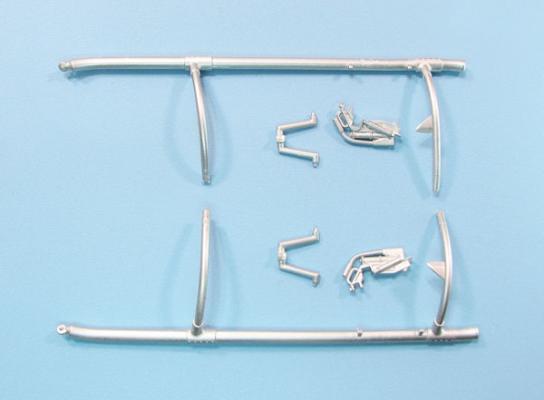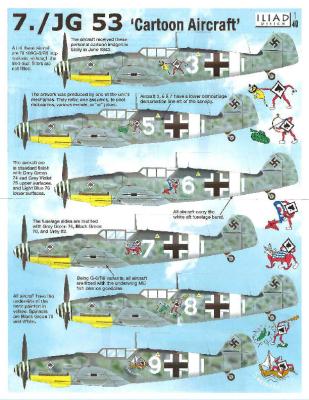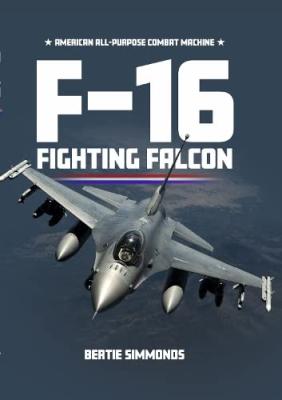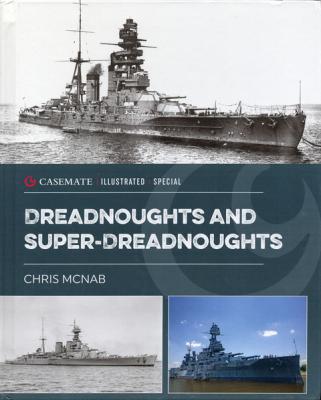Chasing the Soft Underbelly - Turkey and the Second World War is an amazing, detailed and concise (for the breadth of history covered) book on Turkey’s involvement in World War II, its involvement in the Balkans, its neighboring countries, and the aftermath of World War I that saw the dissolution of the Ottoman Empire. While this is not an easy book to digest if you don’t have any background with Turkey, the Balkans, or the principal players (especially the non- historically relatable Turkish leaders), it is well worth the time and money invested. It will fill in a lot of previously known factors of Turkey and its neighbors in the critical 20th Century.
What's New
A Very Brief History the Typ 320 (W142) Cabriolet
WWII German Staff Car (from Manufacturer’s kit notes)
“The Mercedes-Benz 320 (W142), developed by Daimler-Benz AG, was launched in 1937. It was equipped with a six-cylinder engine with a volume of 3.2 liters (3.4 liters in later versions), which had 78 horsepower. It was available with a short (2880 mm) or long (3300 mm) wheelbase. The Mercedes-Benz 320 (W142) was the most prestigious of the three 6-cylinder middle-class models. One of the body variants for long-wheelbase cars was the Cabriolet. In turn, there were also several versions of this version of the Mercedes-Benz 320, which differ with number of seats, doors, and side windows. The four-seat Cabriolet B version had two doors and four side windows. This car was used by the Wehrmacht as a staff car and was also used as a vehicle for the transportation of senior commanders.
Ryan Aircraft was awarded a contract to develop a new, second-generation target drone based loosely on the Q-2A drone. It vaguely resembled its Q-2A ancestor in general outline. The BQM-34 would spawn a whole family of remotely controlled drones, from the original aerial target, up to reconnaissance variants.
Molded in light grey plastic, there are 42 pieces in all, four of which are not used in the build. The only major problem with the kit is that the intake lip, for some reason, is a separate piece.
Boxing up multiple kits into a single boxing and offering a discount is not a new concept, however, it has yet to be as effective as what ICM currently offers in their product range. This offering offers two great aircraft and a set of figures to compliment them. A diorama waiting to be put together.
As there are three kits in this boxing, the O-2A Skymaster and the OV-10A Bronco along with USAF Personnel in Vietnam, I’ll offer three reviews in one as well.
Pilots & Technicians
First off, the personnel. This single sprue contains the parts for five figures found on a USAF flight line.
Finding figures in 1/48th scale for Vietnam is a pretty hard chore. Whether you want to depict USAF or Army helicopter pilots your choices in the past have been pretty slim. Well thanks to ICM there is at least a new option.
Atlantis Models gets credit for another Tom Daniel classic save by resurrecting the Glowing Ghost of the Red Baron kit Atlantis M6742-Model Kit. At 1:4 scale it’s easy to work with and It’s a great kit for beginners too.
Attesting to its popularity the kit’s been re-released a few times in various versions as well as, but this fresh new 2023 offering by Atlantis Models is the first reissue in decades.
Originally released as kit #PC220 in 1969, and according to Tom, “I thought we could do something fun with the chrome helmet again (at the time) and sketched out this skeleton "ghost" design on a place mat at a Mexican restaurant.”
Also included is a beautiful new waterslide decal sheet featuring the Iron Cross markings from WWI and a rubber band to activate the “bobble bone” and invoke the jittering eyeballs.
The original, “far out” instructions now printed in red and black, detail the 10,740 steps required for construction.
For the 1974 racing season, four Porsche 911 Turbo Carrera RSR cars were produced for the Martini Racing Team introducing a turbo boost to the 911 platform. Powered by a 2.1 L turbo-charged engine providing nearly 500 HP, the #22 car driven by Muller & van Lennep took second place at the 24 Hours of Le Mans race.
This 2023 model kit re-release has been issued numerous times by various manufacturers. Italeri gives it a skill level 2 rating. It’s a simple kit to build in out-of-the-box (OOB) form (minus the decals). The kit contains 42 pieces. The body is molded in a silver color. The rest of parts are on one tree molded in black, and there’s a clear window piece with headlight lenses. The model features soft rubber tires and colorful Cartograph waterslide decals. There are instructions for 2 versions with full-color decal placement images and paint callouts.
I’ve built two ICM AH-1Gs in 1/32nd scale. They are great kits, but the landing gear mounts can be fragile in the hands of a ham-fisted modeler like myself. On the two I built I had to pin and glue the gear back on a couple of times. It was frustrating as it was near the end of the build.
The difference between the early and late gear is the early gear has the fairing around the crosstubes. The late are just the round crosstubes.
Inside SAC’s typical blister pack are two white metal landing gear and four parts for the ground handling wheels. Mine were perfectly cast and were exact replicas of the kit landing gear, but stronger. This set does NOT have the aerodynamic fairings installed. Many of the later Vietnam era Cobras had the fairings removed to save weight but more importantly was they really didn’t help. They were a major pain to remove and reinstall.
Oh great another 109 decal sheet. Well yeah, but this one is different. This one has cartoon characters on the sides. Big cartoon characters!
Contained in a standard ziplock bag is one decal sheet with markings for six airplanes from 7./JG-53 based in Sicily in 1943 and two smaller sheets with fuel stencils. I believe they are printed by Cartograf these are some gorgeous decals for some very unique airplanes. The sheet is the standard 9x6 decal sheet with markings for the known cartoon aircraft. All of them are basically marked the same with the exception of the cartoon character. The decals provide you with all the aircraft numbers and characters. You get crosses, swastikas and fuel stencils for eight aircraft . Four sets of JG-53 emblems are included. There are no additional stencils included. You’ll have to source them elsewhere.
Introduction
Sleek, futuristic and deadly – the General Dynamics F-16 Fighting Falcon was born from the crucible of the air war over Vietnam and the need for cheaper, simpler and more maneuverable fighter aircraft with which to combat the many thousands of Soviet-bloc supplied aircraft sold around the world. Back in the early 1970s the F-16 was the pinnacle of modern design, integrating a powerful turbofan engine and offering unrivaled maneuverability – thanks to its relaxed static stability and fly-by-wire system with computer control. Today’s F-16 Viper is light years away from the simple, lightweight point defense fighter first envisaged, but it has evolved and matured into the finest and most exported fourth-generation combat aircraft around the world. This is its story.
The book's cover has a stunning, head-on, in-flight photo of an F-16.
By the turn of the Twentieth Century, Great Britain was at the height of its industrial and colonial power, with the largest ironclad navy in the world. By 1904, Britain ruled the seas with 45 “pre-dreadnaught” battleships. Each of these carried a main armament usually consisting of four 12- or 13-inch main guns in two twin turrets (one forward and one aft) along with a number of lesser caliber weapons (6”, 12-pounder and 3-pounder) for close in defense. Other navies, primarily Germany, the United States, and after 1905 Japan followed on Great Britain’s heels. The stage was set for an abrupt alteration in the status quo, as industry, technology and the critical thinking of one man combined to change the face of naval power in the decades to come.

